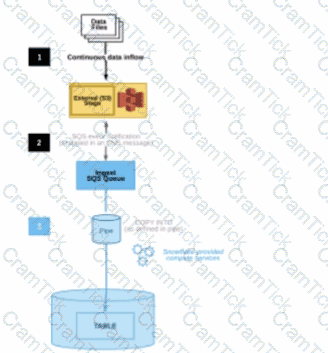

SnowPro Advanced: Architect Certification Exam
Last Update Dec 9, 2025
Total Questions : 162 With Methodical Explanation
Why Choose CramTick

Last Update Dec 9, 2025
Total Questions : 162

Last Update Dec 9, 2025
Total Questions : 162
Customers Passed
Snowflake ARA-C01
Average Score In Real
Exam At Testing Centre
Questions came word by
word from this dump

Try a free demo of our Snowflake ARA-C01 PDF and practice exam software before the purchase to get a closer look at practice questions and answers.

We provide up to 3 months of free after-purchase updates so that you get Snowflake ARA-C01 practice questions of today and not yesterday.

We have a long list of satisfied customers from multiple countries. Our Snowflake ARA-C01 practice questions will certainly assist you to get passing marks on the first attempt.

CramTick offers Snowflake ARA-C01 PDF questions, and web-based and desktop practice tests that are consistently updated.

CramTick has a support team to answer your queries 24/7. Contact us if you face login issues, payment, and download issues. We will entertain you as soon as possible.

Thousands of customers passed the Snowflake SnowPro Advanced: Architect Certification Exam exam by using our product. We ensure that upon using our exam products, you are satisfied.
Following objects can be cloned in snowflake
The diagram shows the process flow for Snowpipe auto-ingest with Amazon Simple Notification Service (SNS) with the following steps:
Step 1: Data files are loaded in a stage.
Step 2: An Amazon S3 event notification, published by SNS, informs Snowpipe — by way of Amazon Simple Queue Service (SQS) - that files are ready to load. Snowpipe copies the files into a queue.
Step 3: A Snowflake-provided virtual warehouse loads data from the queued files into the target table based on parameters defined in the specified pipe.

If an AWS Administrator accidentally deletes the SQS subscription to the SNS topic in Step 2, what will happen to the pipe that references the topic to receive event messages from Amazon S3?
A company is storing large numbers of small JSON files (ranging from 1-4 bytes) that are received from IoT devices and sent to a cloud provider. In any given hour, 100,000 files are added to the cloud provider.
What is the MOST cost-effective way to bring this data into a Snowflake table?